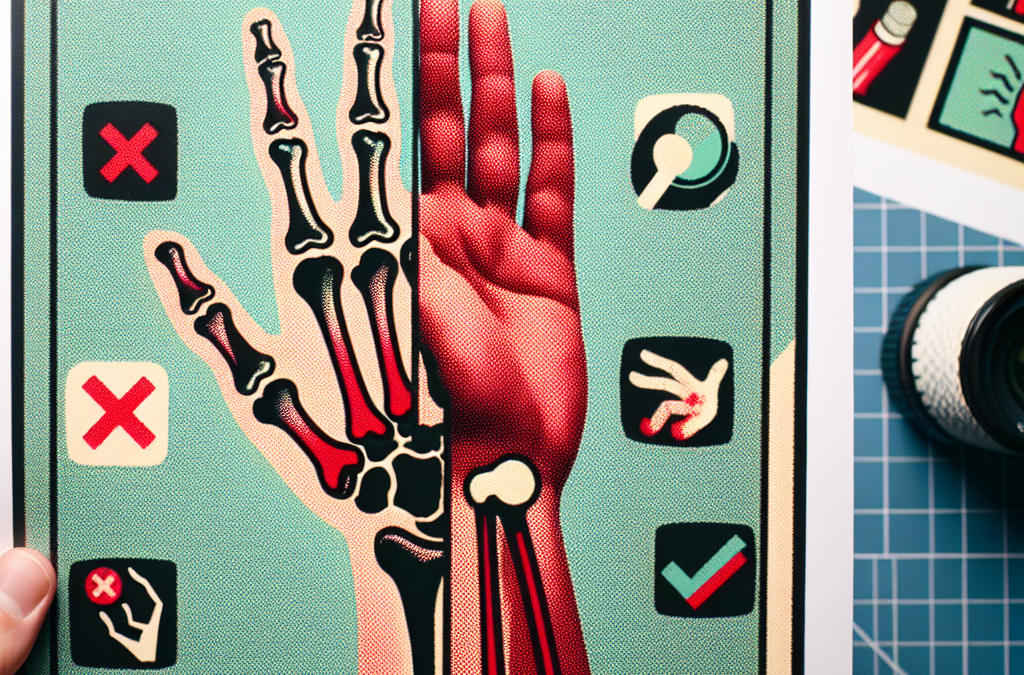Understanding Joint Pain: It’s Not Just for Old Folks
Myth: Only Older Adults Suffer from Joint Pain
One of the biggest myths I’ve encountered about joint pain is the misconception that it only affects older people. In my experience, this couldn’t be further from the truth. Individuals of all ages can experience joint-related issues, whether due to genetics, injuries, or conditions like arthritis. I’ve seen teenagers and even children complain about knee pain after sports, which goes to show that age is not the only factor here.
It’s common for younger folks to dismiss joint pain, thinking it’s a normal part of aging. But here’s the kicker: many athletes face joint pain due to the sheer physical demands placed on their bodies. They push hard, and sometimes, they pay the price. So, if you’re young and thinking your joints are invincible, trust me, being proactive is key.
Regardless of age, it’s essential to listen to your body. Ignoring joint pain isn’t just a rite of passage; it can lead to bigger problems down the road. Whether you’re in your teens, twenties, or beyond, take care of your joints by staying active but smart!
Types of Joint Pain: More Than Just Wear and Tear
Myth: All Joint Pain Is Because of Arthritis
Another common misconception is that all joint pain results solely from arthritis. Sure, arthritis is a prevalent issue, but it’s not the only culprit. In my journey, I’ve discovered various types of joint pain stemming from different causes, such as injuries, overuse, and even infections.
For instance, tendonitis is one of those sneaky issues. It often sneaks in when you least expect it, especially if you’ve been pushing your limits in the gym or on the field. Treating tendonitis involves more than just resting; you might need physical therapy and a reassessment of your activity levels.
Then there’s bursitis, which happens when the small, fluid-filled sacs in your joints get inflamed. Again, it doesn’t have to be linked to aging. Each type of joint pain has its specific reasons, and understanding the distinctions can lead to better treatment options.
Exercise: The Enemy of Joint Pain? Hardly!
Myth: You Should Avoid Exercise to Reduce Joint Pain
When I hear folks say that exercising will wreak havoc on their joints, it honestly makes me cringe a bit. In reality, staying active is a crucial part of managing joint pain. I get it; the thought of working out while your joints are aching can be daunting, but the right exercises can actually help alleviate that pain.
The Best Joint Support (Naturally) Starts with Organic Nutritional Support!
Get 40% Off Here ...
Low-impact activities, such as swimming or cycling, can keep your joints moving without the stress that running might cause. What I love most about these exercises is that they not only strengthen the muscles around the joints but also improve flexibility and reduce stiffness.
Moreover, a little strength training goes a long way. Building muscle can help support your joints, making everyday movements smoother. Just remember, listening to your body is paramount. It’s about finding the right balance that keeps you moving without overdoing it!
Diet’s Role: What You Eat Matters!
Myth: Diet Has No Effect on Joint Pain
Let’s chat about food for a second. The idea that diet has no bearing on joint pain is something I’ve encountered quite a bit. In my experience, what you eat really can make a difference. There are foods out there that can either inflame your joints or help reduce that pesky pain.
For example, omega-3 fatty acids found in fish like salmon or walnuts can have anti-inflammatory effects. Incorporating more of these foods into your diet can promote joint health. Plus, a balanced diet rich in fruits, vegetables, and whole grains contributes to overall wellness, making it easier for your body to manage pain.
On the flip side, I’ve been surprised to learn how processed foods and sugars can lead to flare-ups. It’s crazy, but the more I fuel my body with unhealthy choices, the more I feel that discomfort creeping back in. So, being mindful of what’s on your plate is crucial in this whole joint pain journey.
Seeking Help: Don’t Go It Alone
Myth: I Can Handle Joint Pain on My Own
Finally, one of the more stubborn myths out there is the idea that you have to tough it out alone when dealing with joint pain. I’ve learned that seeking help—from doctors, physiotherapists, or even support groups—can be a game-changer. You don’t have to grin and bear it!
Professional help means getting tailored advice that considers your unique situation. I’ve personally found that consultations often bring tailored strategies that can ease pain and improve function. Those resources can give you insights on the best exercises, stretches, and treatments for your condition.
Sometimes, just talking to someone who understands what you’re going through can make a world of difference. Emotional support and encouragement can contribute significantly to how you manage pain daily. So, don’t hesitate to reach out; there’s no shame in seeking help!
Frequently Asked Questions
1. Are all joint pains related to arthritis?
No, joint pain can originate from various causes like injuries, tendonitis, bursitis, and more. Arthritis is just one of the many conditions affecting joints.
2. Is exercise harmful if I have joint pain?
No, exercising appropriately can help improve joint function and decrease pain. Low-impact activities and strength training can be very beneficial.
3. Can my diet really influence joint pain?
Yes! Foods rich in omega-3 fatty acids can help reduce inflammation, while processed foods can worsen pain.
4. Should I handle joint pain on my own?
It’s always best to seek professional help. A healthcare provider can offer tailored advice and effective treatment options.
5. Is joint pain common in younger individuals?
Absolutely! Joint pain can affect anyone, regardless of age, particularly athletes or those with certain injuries.



























































